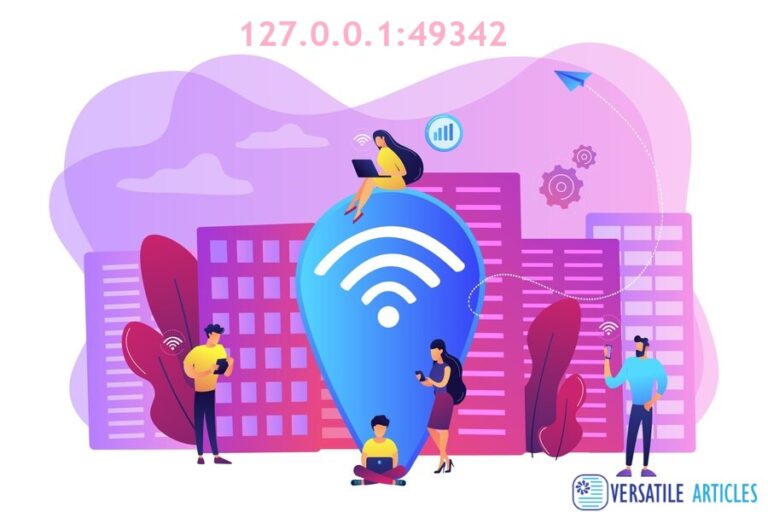The term 127.0.0.1:49342 might seem cryptic to many, but for those familiar with networking and software development, it is a combination that sparks recognition. It represents a specific port number (49342) on the localhost IP address (127.0.0.1). But what exactly does this mean, and why is it significant? In this article, we will dive into the details of this address, its role in computing, and how it is used in various applications.
What Is “127.0.0.1”?
Before discussing 127.0.0.1:49342, it’s important to understand what 127.0.0.1 signifies. Commonly referred to as “localhost,” 127.0.0.1 is the default IP address assigned to the loopback interface on a computer. This address is reserved for internal communication within the same machine and does not interact with external networks.

Key Features of 127.0.0.1:
- Internal Communication: It allows applications to communicate with each other on the same machine.
- Testing Environment: Developers often use it to test web servers or applications locally.
- No Internet Dependency: Unlike external IPs, 127.0.0.1 works independently of internet connectivity.
Understanding “49342”: The Port Number
In networking, a port number is a communication endpoint used to distinguish different services or processes running on the same device. The number 49342 is a port assigned dynamically, often used for temporary connections or local development tasks.
How Ports Work:
- Standard vs. Dynamic Ports: Common services like HTTP use standard ports (e.g., port 80), while others like 49342 fall into the dynamic range (49152–65535).
- Applications: Developers might use dynamic ports like
49342for debugging, testing, or running local servers.

The Significance of “127.0.0.1:49342”
When combined, 127.0.0.1:49342 refers to a specific service or application running on port 49342 of the localhost. This setup is essential for developers who need a controlled environment to simulate network connections without involving external networks.
Typical Use Cases:
- Web Development: Localhost addresses like 127.0.0.1:49342 allow developers to preview websites or APIs during development.
- Debugging Applications: Developers use dynamic ports to test the functionality of specific components.
- Game Servers: Some multiplayer games rely on localhost configurations for internal testing.
- Database Management: Tools like MySQL or PostgreSQL can be configured to listen to localhost ports during development.
Why Use Localhost with Port Numbers?
The use of addresses like 127.0.0.1:49342 offers several advantages, particularly for developers and IT professionals.
- Security: Running services on localhost ensures they remain inaccessible to external users, reducing security risks.
- Isolation: It isolates the testing environment from production, preventing unintended interference.
- Speed: Local connections are faster since they do not depend on external network latency.

Common Challenges with “127.0.0.1:49342”
While localhost setups are straightforward, users can encounter issues such as:
- Port Conflicts: If another application is already using port
49342, the new service may fail to start. - Firewall Restrictions: Some systems might block localhost communication if improperly configured.
- Configuration Errors: Incorrectly setting up servers or applications can lead to connectivity problems.
Solutions:
- Use tools like
netstatorlsofto identify which process is using a specific port. - Ensure firewalls allow local traffic to pass through.
- Double-check server configuration files for proper setup.

Practical Examples of Using “127.0.0.1:49342”
Here are some scenarios where you might encounter this address:
Example 1: Running a Local Web Server
Developers often use tools like Python’s SimpleHTTPServer or Node.js to run a local web server on 127.0.0.1:49342. This allows them to test websites before deployment.
Example 2: Database Connections
Database management tools can connect to localhost on a specific port (e.g., 127.0.0.1:49342) to manage or query data securely.
Example 3: Debugging Applications
Integrated development environments (IDEs) or debugging tools might open dynamic ports like 49342 for debugging processes.
Best Practices for Working with Localhost
- Choose Unused Ports: Always ensure the port number you choose is not already in use.
- Document Configuration: Keep records of which ports are used by which applications for easy troubleshooting.
- Secure Your Setup: Even though localhost is internal, ensure your configurations are secure to prevent vulnerabilities.

Conclusion
The address 127.0.0.1:49342 plays a crucial role in local networking, serving as a backbone for testing, development, and debugging processes. By understanding its purpose and how to use it effectively, developers and IT professionals can streamline their workflows and enhance productivity. Whether you’re a beginner or an expert, mastering localhost setups is an invaluable skill in the tech world.
FAQs About “127.0.0.1:49342”
1. What is the difference between 127.0.0.1 and 0.0.0.0?
127.0.0.1 refers to the localhost, while 0.0.0.0 represents all IPv4 addresses on the local machine.
2. Can I access 127.0.0.1:49342 from another computer?
No, localhost addresses are isolated to the local machine and cannot be accessed externally.
3. How can I check which process is using port 49342?
Use tools like netstat (Windows) or lsof (Linux/macOS) to identify the process.
4. Why is my localhost connection failing?
Common causes include port conflicts, firewall restrictions, or incorrect configurations.
5. Is it safe to use localhost for sensitive applications?
Yes, but ensure your setup is secure and properly configured to avoid vulnerabilities.
By embracing the power of 127.0.0.1:49342, you can unlock a world of possibilities for local development and beyond.
For more insightful articles like this, visit VersatileArticles.com and explore a world of versatile knowledge tailored to your needs.

